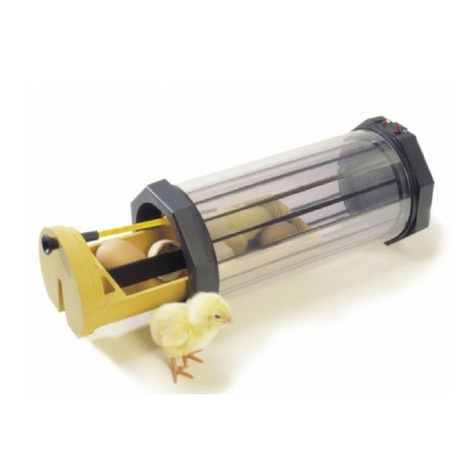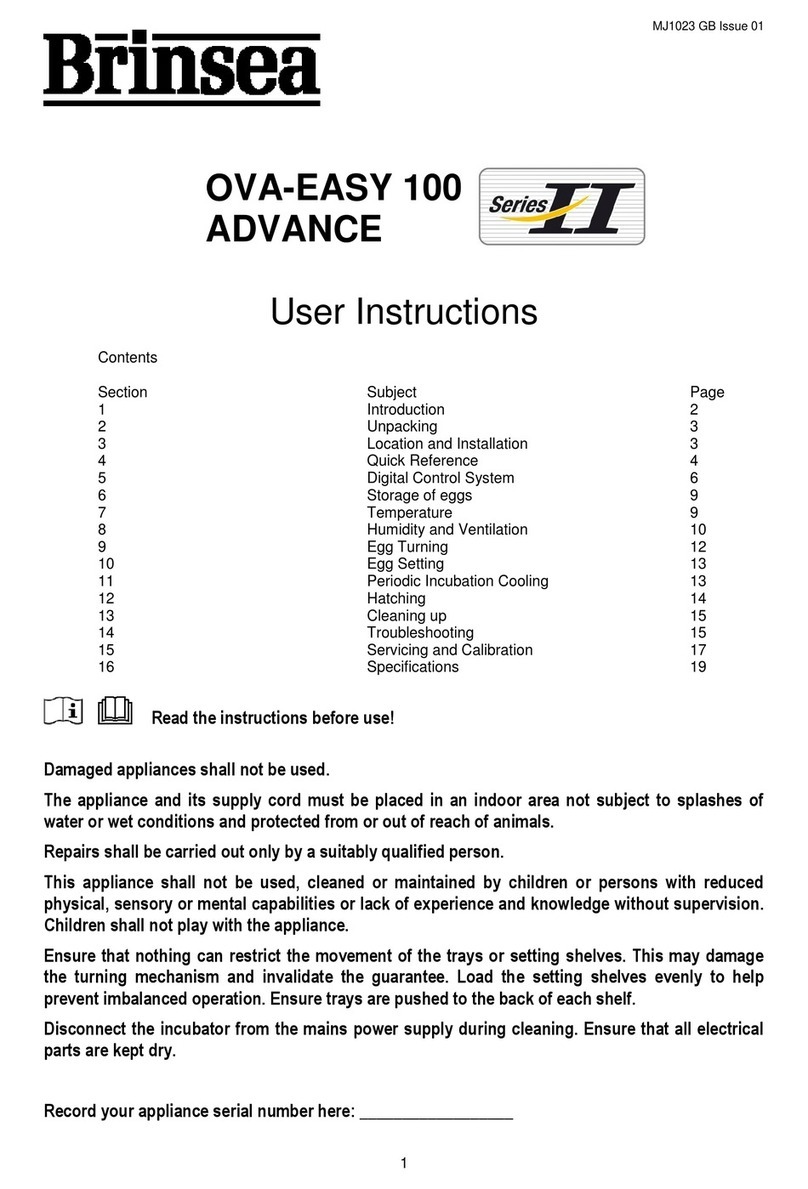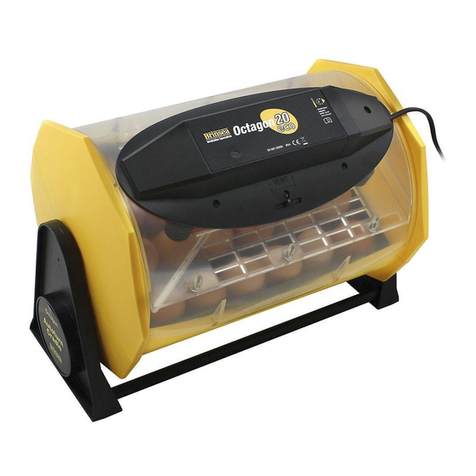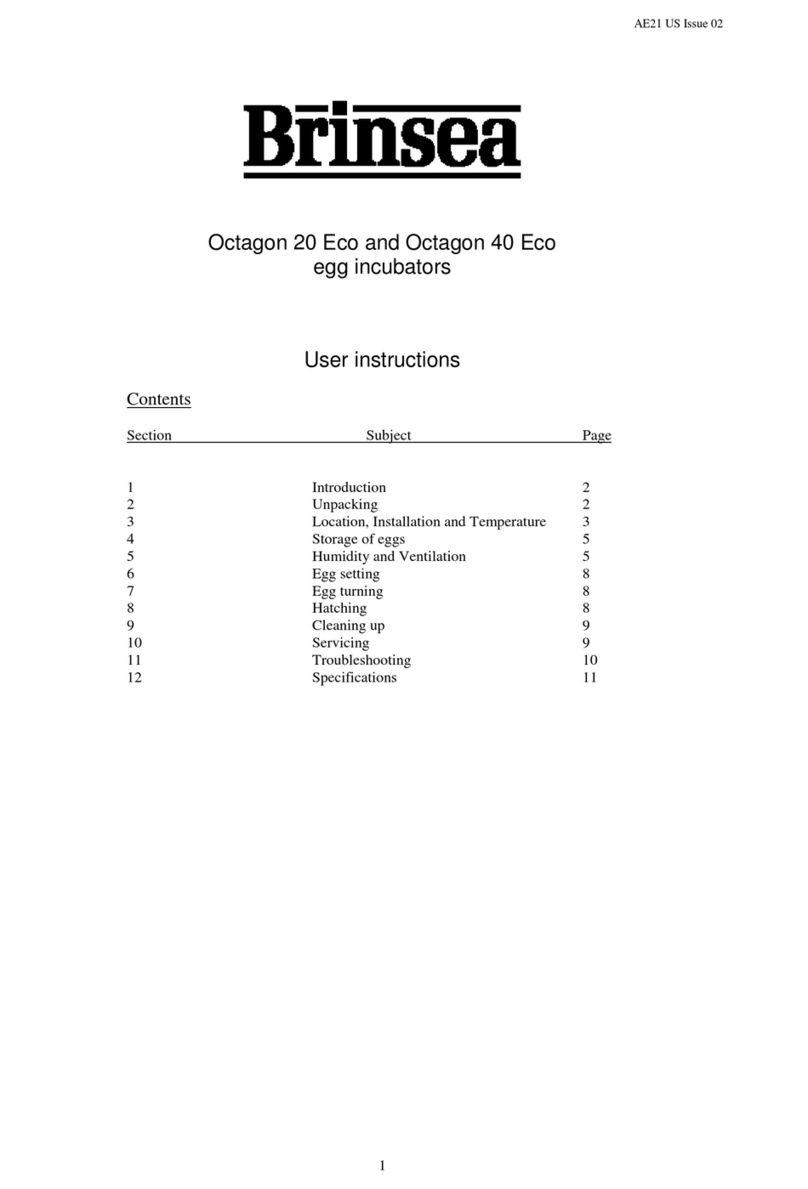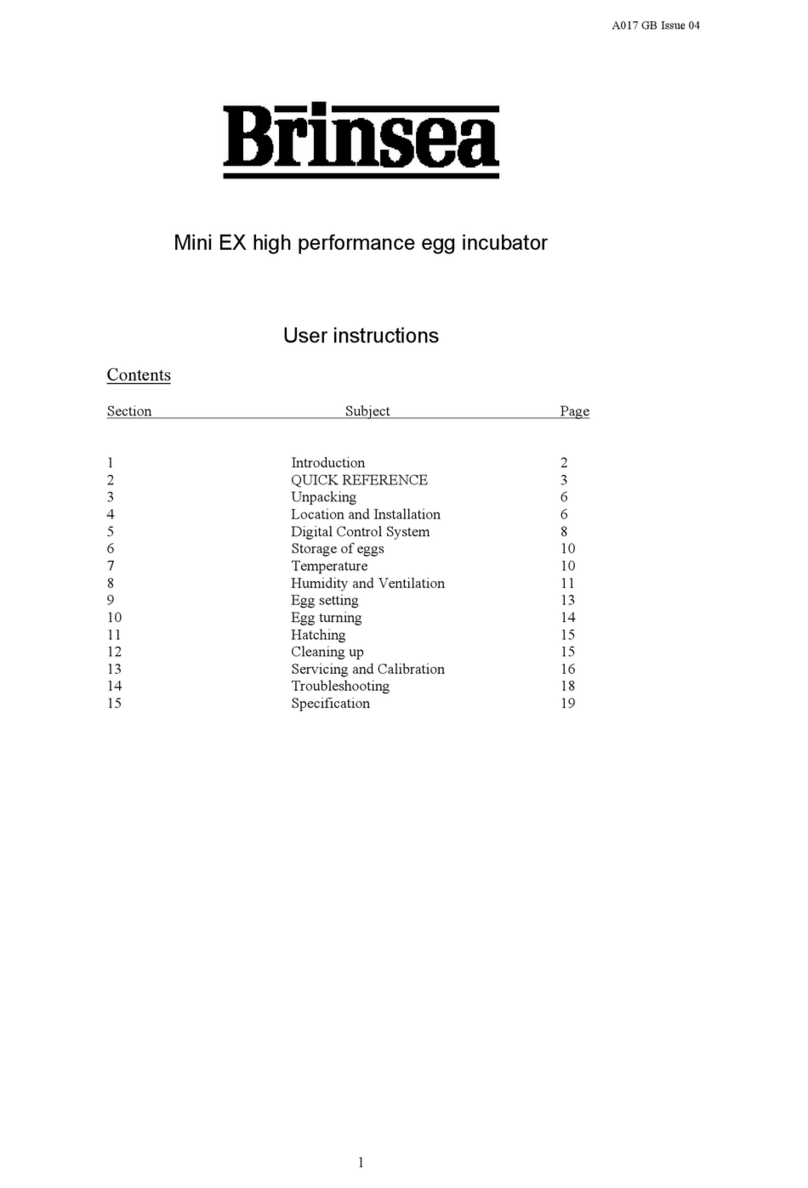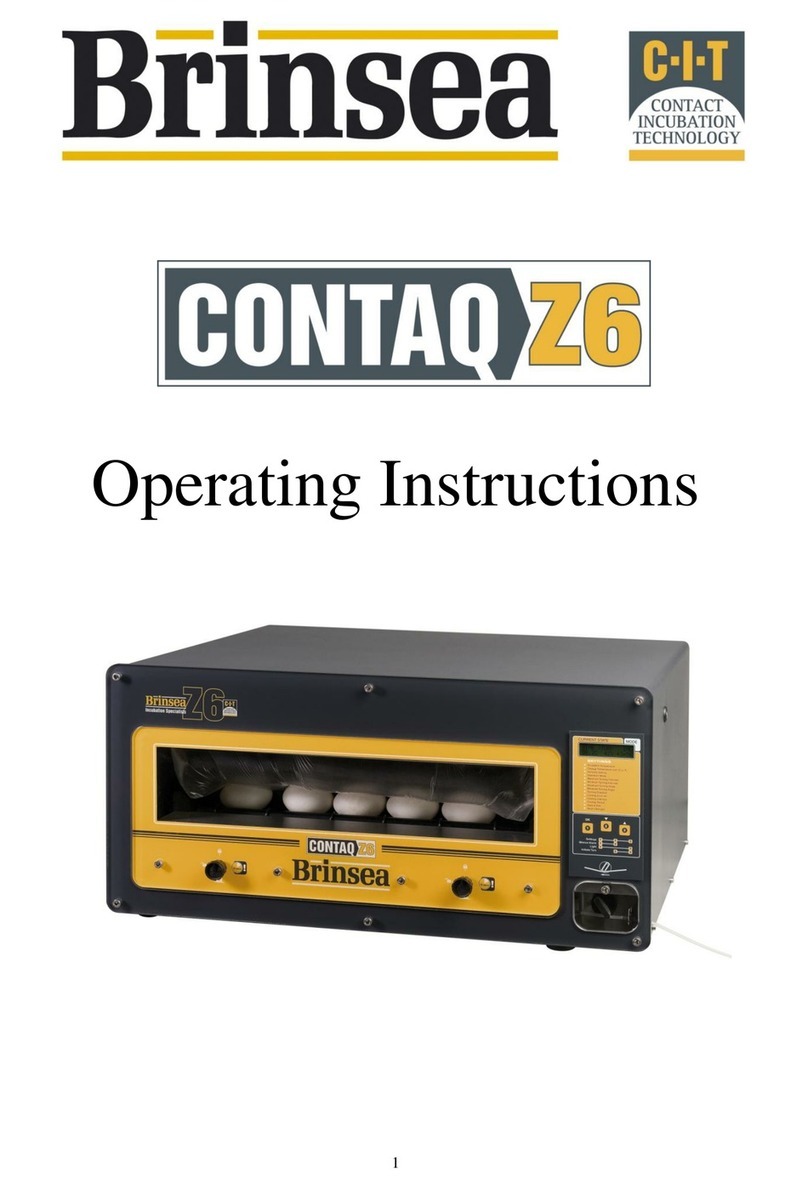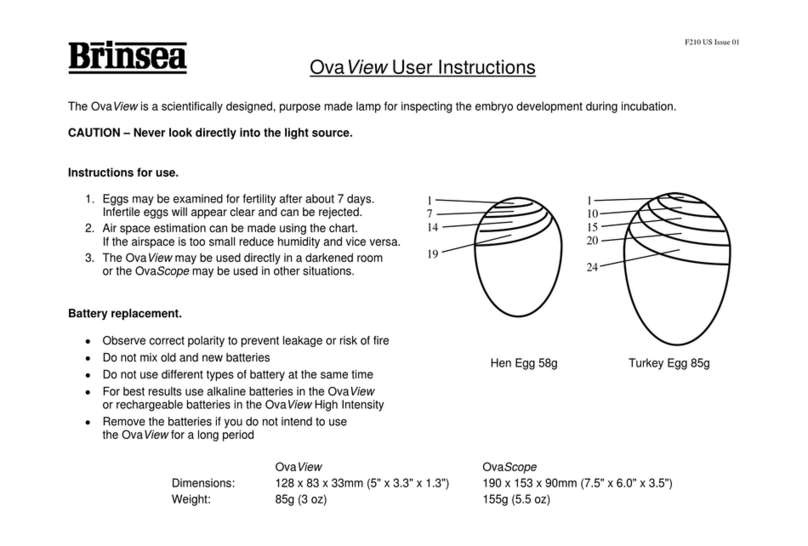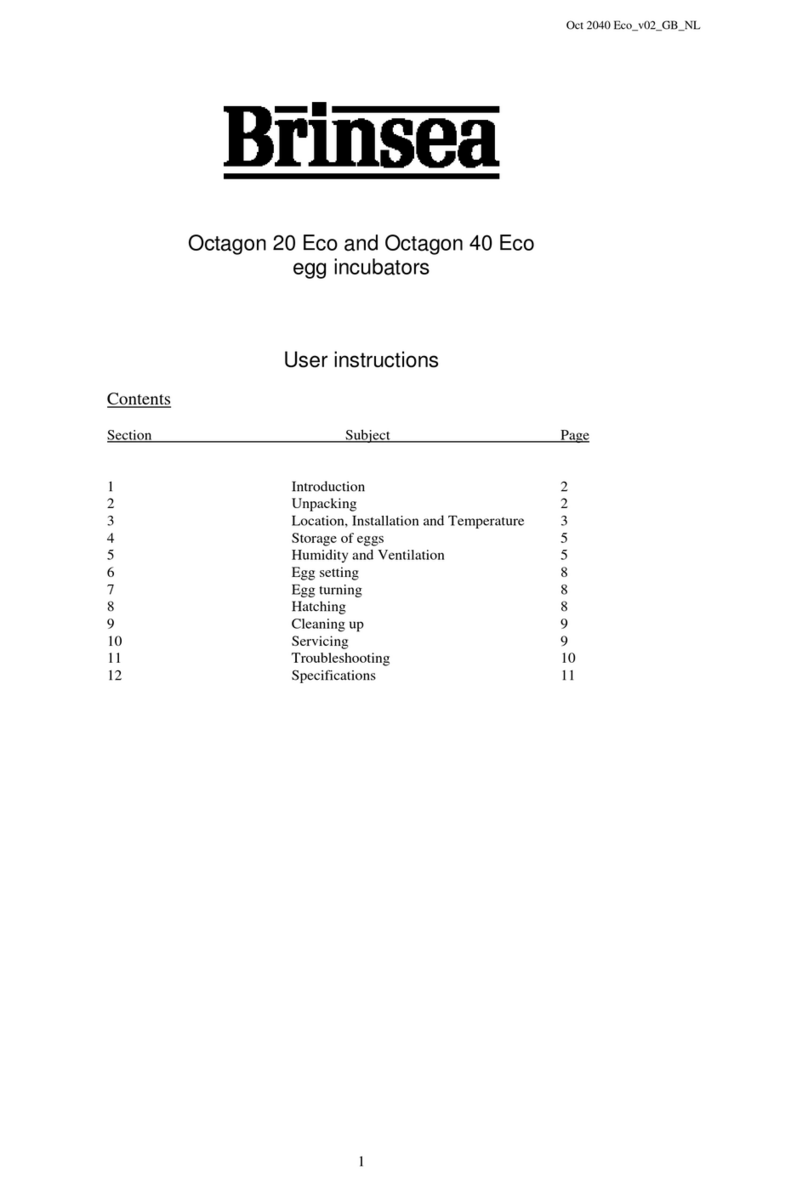1 SETTING UP YOUR INCUBATOR
PUMP SETUP
The Ovation EX incubator uses a peristaltic water
metering pump to automatically control the
relative humidity of the air in the egg chamber.
Pumped water is fed to an expanded paper
evaporation block where warm air is drawn over
the large surface to effectively evaporate all the
water (none should collect under normal
conditions). This humidified air is then mixed within
the heating chamber so that the air drawn across
the eggs is of uniform humidity and temperature.
The pump is supplied with a water pump tube (4.3”
/ 110mm) and two pump connectors that are fitted
at each end of the tube. Use the tube diagram to
ensure your tube is cut to the correct length.
1: Ensure the long pump connector is in the correct
position with the nozzle passing through the slot
into the incubator as shown.
2: Cut the water container tube to length (a length
of silicon water tubing to connect the pump to the
water container). Leave enough spare so that the
incubator top can be easily removed and placed to
one side. Attach one end of the water container
tube onto the other side of the short pump
connector and feed the tube into your water
container.

